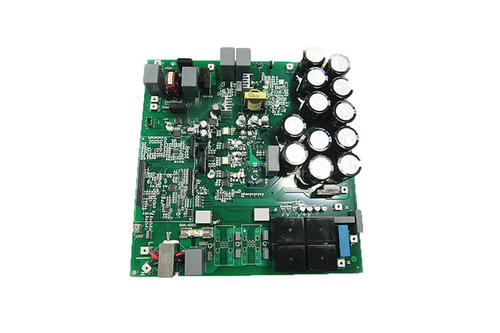 +86 755 2794 4155
+86 755 2794 4155  sales@knownpcb.com
sales@knownpcb.com
-
Shenzhen KNOWNPCB Technology Co., Ltd.
 +86 755 2794 4155
+86 755 2794 4155  sales@knownpcb.com
sales@knownpcb.com
 2023-09-16
2023-09-16
 726
726

Printed circuit boards (PCBs) are an indispensable part of electronic devices, and their performance and reliability directly affect the operation of the entire system. PCB (Printed Circuit Board), also known as Printed Circuit Board (PCB) in Chinese, is an important electronic component that supports electronic components and serves as a carrier for the electrical interconnection of electronic components. Due to its use of electronic printing technology, it is called a "printed" circuit board.
Cabling is a key step in PCB design, which determines the performance and stability of the circuit board. This article will explore the wiring principles and practical techniques of PCB boards to help engineers achieve better results in design.
Wiring principles
Following the circuit schematic diagram
Wiring should strictly follow the circuit schematic to ensure correct wiring connections and prevent short or open circuit problems. During the wiring process, each component in the circuit should be marked for subsequent maintenance and repair.
Consider signal direction
When wiring, it is necessary to consider the direction of the signal and make the signal line as short as possible to reduce signal attenuation and noise. For high-frequency signals, it is necessary to pay attention to impedance matching of signal lines to avoid signal reflection and distortion.
Layered cabling
In multi-layer PCBs, wiring should be layered based on the functionality of the circuit. For example, the power layer and ground layer can be wired separately to reduce noise from the power and ground layers. Different signal layers can also be layered and wired to avoid interference between signals.
Avoid 90 degree bending
During the transmission process, the signal line should avoid bending at 90 degrees as much as possible. Because this bending will increase the reflection and noise of the signal, affecting the quality of the signal. If a 90 degree bend is necessary, a 45 degree bend or arc bend should be used to transition.
Ground wire design
The design of ground wires is crucial for the reliability of PCBs. During the wiring process, it should be ensured that the ground wire is as wide as possible to reduce the impedance of the ground wire and improve its stability. At the same time, 90 degree bending of the ground wire should be avoided to ensure the continuity of the ground wire.

Or call +86 755 2794 4155
Inquiry Now

